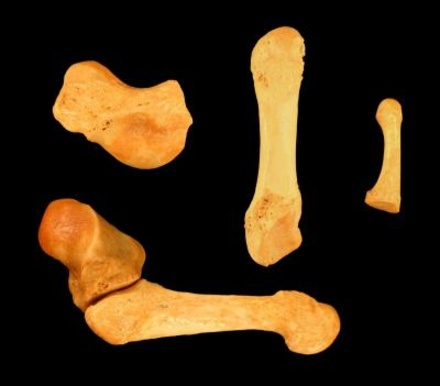The Nobel Prize in Physiology or Medicine was awarded jointly to John B. Gurdon and Shinya Yamanaka for – you guessed it- stem cell research. Or more specifically, “for the discovery that mature cells can be reprogrammed to become pluripotent". The announcement was unsurprising, as it was widely speculated that Yamanaka’s work on induced pluripotent stem cells (iPSCs) and Gurdon’s early cloning experiments would be likely candidates for the prize. The dynamic duo had already shared the Albert Lasker Basic Medical Research Award three years ago.
An outbreak of meningitis has been reported among patients who received injection of preservative-free methylprednisone acetate, a steroid medication which is administered by injection into the spinal cavity. As of today, 47 cases of meningitis and 5 deaths as a result of the distribution of contaminated compounds have been reported.
Scientists are commonly portrayed as paragons of rationality, subsisting solely on fact-based evidence and hard data; what goes on behind laboratory doors is in large part a mystery to the general public. In the past several years, however, there have been several notable cases of scientific fraud exposed: in 2006, it was revealed that Hwang Woo Suk fabricated data in papers claiming that he had managed to extract stem cells from cloned embryos. At around the same time it was discovered that Norwegian researcher Jon Sudbo made up a study where he claimed that anti-inflammatory drugs reduced the risk of oral cancer.
The human brain is made up of billions of neurons, specialized cells which form vast, intricate networks among themselves to process and sort through the barrage of sensory and internal stimuli we are constantly bombarded with and mediate the appropriate response.
Neurons are long thread-like cells with numerous branches projecting from each end to allow communication with other neurons. When excited, an electrical impulse travels through the neuron and, when it reaches the far end, chemical messengers are released into the synapse, a narrow (microscopic) space between the sending and receiving neurons. These messengers then act on the receiving end of the neighboring neuron to either excite or inhibit it.
“Anatomically modern humans” (AMH), or the first subspecies which bore the closest resemblance to modern humans, lived in Africa approximately 200,000 years ago (the exact time frame is a point of contention for most archaelogists, but we'll stick with this one). AMH inhabited a relatively small region of Africa until somewhere between 60,000 and 80,000 years ago, when our ancestors suddenly became restless and began to venture out into surrounding areas, eventually reaching Europe and Asia 40,000 years ago.
The rest, as they say, is history.
Scientists have been 'abuzz' with the results of a recent study published in Nature Neuroscience in which it was reported that differences in the behavior of honeybees correlated to variations in DNA methylation patterns. These changes, moreover, could be reversed, allowing bees to transition between two distinct roles and alter their behavior accordingly.
 New Study Lends Additional Support To Grandmother Hypothesis
New Study Lends Additional Support To Grandmother Hypothesis Bones Of Contention: Dinosaur Cells Survived Millions Of Years Trapped In Bone
Bones Of Contention: Dinosaur Cells Survived Millions Of Years Trapped In Bone GM Mice Put To Work As Living, Furry Hidden Landmine Detectors
GM Mice Put To Work As Living, Furry Hidden Landmine Detectors Teaching An Old Protein New Tricks: Developing A Novel Gene Therapy For Huntington's Disease
Teaching An Old Protein New Tricks: Developing A Novel Gene Therapy For Huntington's Disease






